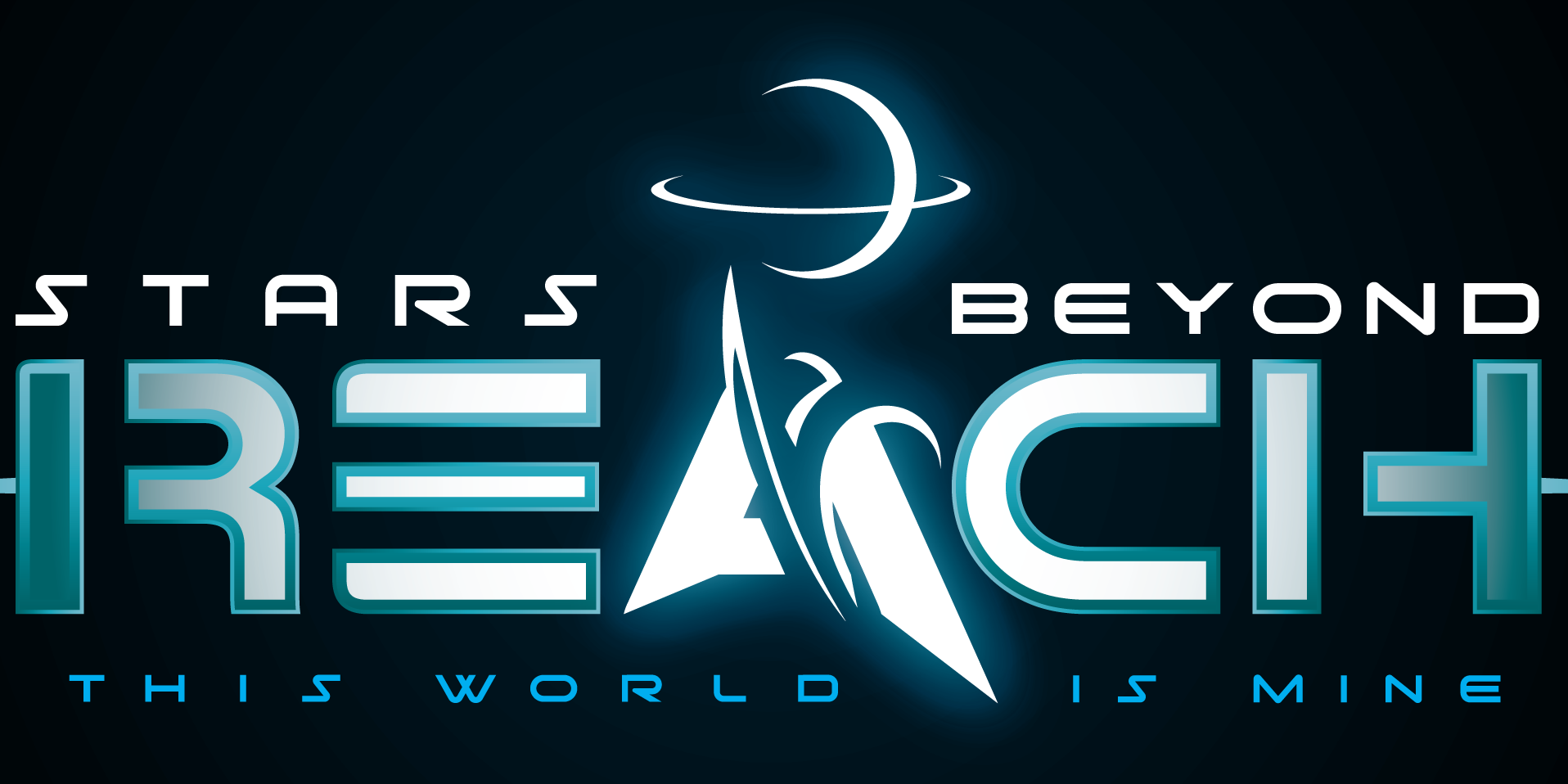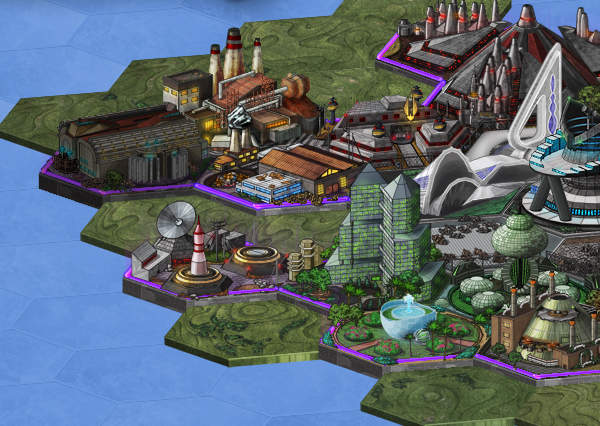A bit ago, I announced Stars Beyond Reach, which you can read a lot more about at that link. The very-short explanation is that this is Arcen’s first true 4X title: think Civilization meets SimCity meets AI War meets New Stuff. More recently, I posted some updated screenshots and some portraits of some of the the racial leaders.
There is one misconception about this game that I want to go ahead and clear up right now, though, which I’ve seen crop up on a number of places on the Internet. And that is that this game won’t have any combat, or that it’s a substantial amount more SimCity than it is Civ. Neither of those are true, and I just want to put that out there now before people see an alpha in January or February and are surprised when we seem to have “changed our plans.” 😉
What Does “No Units?” Really Mean?
In any strategy game, there are a variety of ways of representing power and its use. In Chess it’s pieces you move around. In risk, it’s the abstract little “armies” that are basically just counters on territories. In most computer strategy games, it’s a combination of buildings, techs, and units. And so on.
As you might guess from AI War, I love RTS games and I think that the buildings + units model works really well there. Things are shown at something remotely approximating scale, and you can set your guys to do a lot of moving around while you are focused elsewhere. There isn’t a whole lot of micro in a game like AI War — you’re not giving individual units orders, and you’re not having to check back and give them orders as well as making sure their prior orders are still a good idea every “turn” (since there aren’t turns, and since the granularity of time is a lot less when there are no turns). So: hooray, RTS games rock for that reason.
I love turn-based games as well, though. One of the big gripes I have with them, though, is how I have these buildings and these units that are at different scales and which are existing on the same tiles. My giant barbarian or tank goes and stands on top of my “city” where his feet are taller than my walls. And if I want to put multiple guys on that tile, either it has to have yet a more-meta interface for stacking, or else it needs to disallow stacking because of the various problems that stacking can cause.
But having units in that sense where you move them around is just one way of abstracting power on a hex grid in a turn-based game. There’s no way that it has to be the only way.
In Stars Beyond Reach, I am still experimenting with a variety of models and so I don’t want to get too specific. There are several things that work really well in our prototype already, and other things that I’m still experimenting with to find the ideal approach. But it’s very promising.
THAT said, the core idea of no units is that you can direct force around the map, and even see things like battle cruisers flying around and whatever, without having to directly move specific units or see them standing around with their sandals on your towers, etc. The idea that you can use buildings to represent both the reach of your power, the location of your power, and the amount of your power. The idea that you can then move that power around, and see some visual indications of what those movements mean (as opposed to just numbers ticking up and down).
Let’s put this another way: it’s more “zoomed out.” If you were one of the generals of WWII, you’d know that you had X number of soldiers in Y location, and if you flew over in a recon plane you could see signs of the battle down there, and you’d hear about the results of the battle, etc. And you’d gain and lose materials and people as well territory. All well and good. But you wouldn’t know “Soldier Bob,” a unit.
This metaphor does break down somewhat because you would know “E Company” or “the 12th Panzer Division.” And a lot of 4x games are basically using a graphic of one guy or tank to represent those sorts of concepts. So we’re back to units again, while staying “zoomed out.”
My problems with units boil down to how tedious they are in practice to move around and manage, how odd they often look graphically, how they obscure the tiles they are standing on, how they create problems like the “stacking problem,” and a whole slew of other things. A sci-fi game like SBR is an excellent place for me to do something different, because the concept of rapid transport (within reasonable bounds) is really much more realistic than it would be in a WWII game, let’s say.
TLDR
Clear as mud? I apologize for that, because I’m not wanting yet to be more specific since we’re still in prototype. My goal is something that you just go “ohhh, yeah, of course it would work that way” when you see it. I’m not 100% of the way there yet, but it’s an idea I’m confident in and it’s coming along. I just want to avoid people calling me out in 2-3 months going “but wait, I thought this was a no-combat game with no soldiers or troop transports or whatever?” It’s definitely not! You’re going to be fighting quite a bit, but in a streamlined way that is more similar to the already-streamlined way that 4x games tend to handle empire building, rather in the (in my opinion) relatively clunky way they handle unit management.
That’s all that’s changing!
Oh, And About SimCity
Part of what makes some of the other things above possible is the detail at which your cities are being represented. We’re not having just “cities” as a kind of monolithic thing that you add a few bits and bobs to. That’s a perfectly valid level of abstraction, and I love plenty of games that do that.
But for the kind of unit-less combat that I have in mind to work, you just can’t use that level of abstraction on the buildings. You need something that is a bit more zoomed in, rather like, well, SimCity. You’ll note that SimCity (4 and before) does an awesome job of modeling people and industries and pollution and waste and water and whatnot, all without ever actually saying “here is Bob, he lives in Apartment X in Building Y.” But your macro-level decisions still affect the growth and flow of your city, and what kind of city it is.
For SBR, some of that gets a lot more detailed than what can be supported inside a 4X that moves at any reasonable pace. Other parts of it really bring out a lot of depth that lead to new and interesting diplomatic, technological, empire-management, and military options and flows.
I’ll use an example from first person shooters: it’s the difference from being able to shoot a guy “in the head or in the body” as far as damaging goes, or being able to knock out one leg, or his trigger finger, or whatever. Militarily-speaking, that’s part of what that extra SimCity-like granularity brings to the table.
Apologies For The Vague Post
I know that in a lot of cases I tend to be more specific than this, but again… prototype phase right now. Based on past projects, I’ve learned to keep a few things to myself until I’m sufficiently certain of them. 😉 Okay, have an Evuck:
Until next time!










Evuck – looks like a seal and hydralisk had some romance:)
I really like the out-of-the-box approach of SBR.